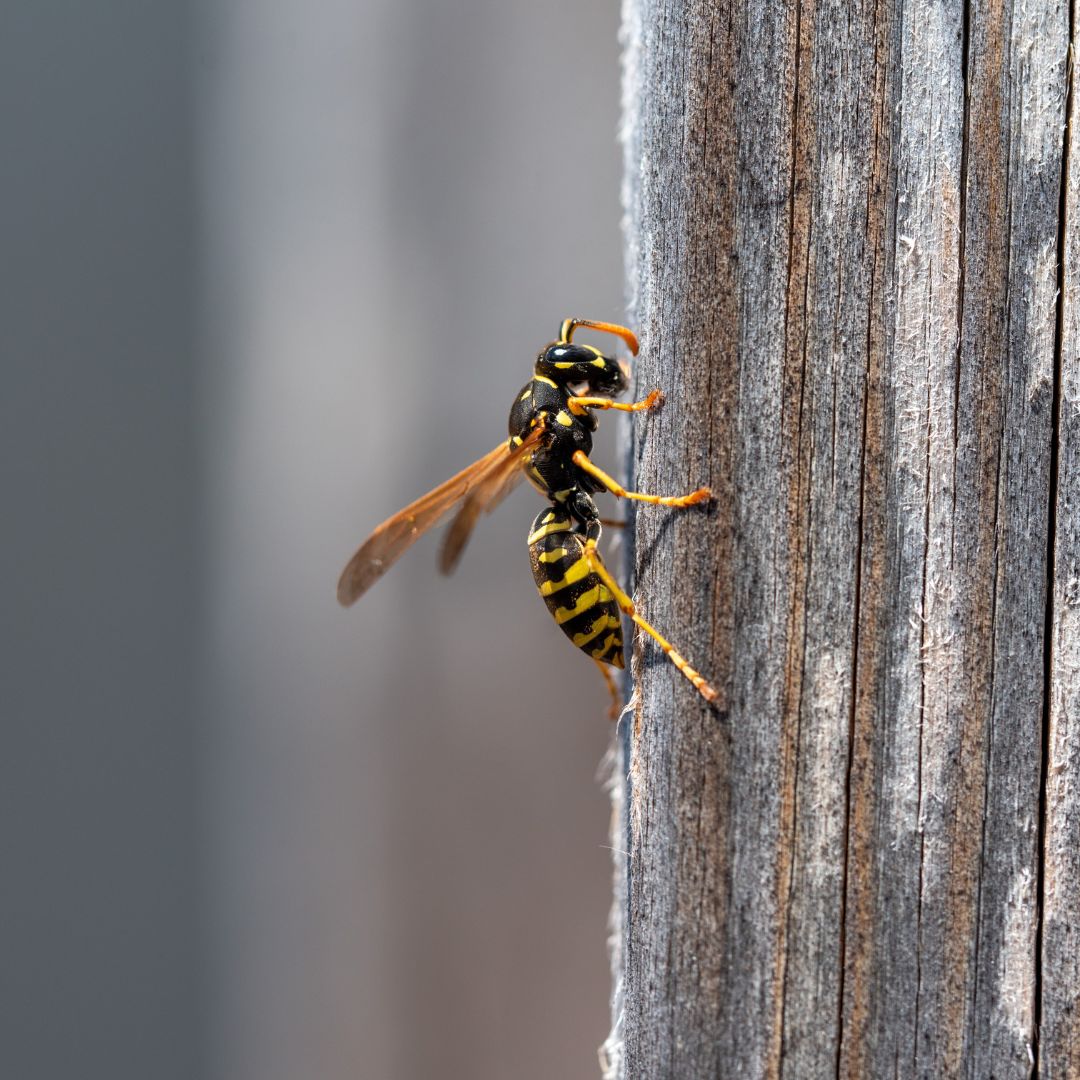European Wasp: new services
Council has introduced a new service to assist its residents with the removal of European Wasp nests from their property.
European Wasps are very common throughout Adelaide. Their nests have been found in a variety of places such as vents, building cavities, holes in trees, holes in the ground and even in ceilings of houses.
If you have found a wasp nest on your property and you would like Council to remove it, please contact us on 8342 7100 during business hours from Monday to Friday only.
Please note Council will only remove ‘European Wasp’ nests. Please view the below information to identify whether the wasps in question are European Wasps prior to calling Council. Other varieties of wasp must be removed at the owners cost using a qualified pest control company.

What do European Wasps look like?
Although European wasps (Vespula germanica) are a non-native Australian species, they are now well established throughout Metropolitan Adelaide. They can be easily identified by their black and yellow bodies, yellow legs and triangular markings on the abdomen.
While the European wasp is approximately the same size as the bee (10-15 mm), it is less hairy, has yellow legs (instead of black) and folds its wings back when resting. Queen European wasps have the same markings and colourings as other European wasps, except they are larger (up to 20mm).
Locating a nest:
It is often difficult to identify where a European Wasp nest is located as they prefer to burrow underground and in the underbrush.
In order for a nest to be destroyed, you need to locate the nest by determining which direction the wasps are flying. A good way to do this is to place a piece of food in a suitable location where the wasp can collect the food.
The wasp should then fly in a straight line towards the nest. Keep relocating the food and you will be led to the nest. A wasp will travel up to 500 metres from its nest to find food, therefore you may need to work co-operatively with your neighbours.
Nests are generally located in sheltered areas, for example, underground, in retaining walls, tree hollows and wall cavities. The nests of European wasps are made from a grey paper material.
What do European Wasps eat?
European wasps are attracted to the same foods as humans, especially sweet foods and meats.
In order to discourage European wasps around your property:
- Do not leave fallen fruit or food scraps lying around
- Avoid leaving dog food or bones out
- Make sure rubbish bins have secure lids
- Keep compost always covered
- Keep your swimming pool and spa always covered
- Cover exposed food when eating outdoors
- Do not drink out of bottles or cans, instead use clear containers or straws
What if I am stung?
Firstly, do not aggravate a European wasp because it may sting. If left undisturbed a European wasp will not be aggressive towards humans or other animals.
However, if a nest is disturbed, a wasp will release a chemical which triggers all wasps to defend the nest. Unlike bees, European wasps can sting multiple times and this sting results in a fiery pain and red swelling.
If someone has been stung:
- Apply ice or a cold pack to the sting
- Take oral analgesics if there is severe pain
- Stings to the face/neck or multiple stings may lead to severe swelling and/or an allergic reaction. If this occurs and/or the person has difficulty breathing, contact an ambulance, hospital or doctor immediately.
- If in doubt, please seek medical advice
For more information on First Aid treatment, please contact the Poisons Information Centre on 131 126.
Bees
If you have a problem with bee swarms on your premises, please call an apiarist listed in the Yellow Pages directory.
Please contact the Council if you have any concerns regarding the keeping of bees on neighbouring premises or regarding the presence of bee swarms in street trees, parks or other areas used by the public.
